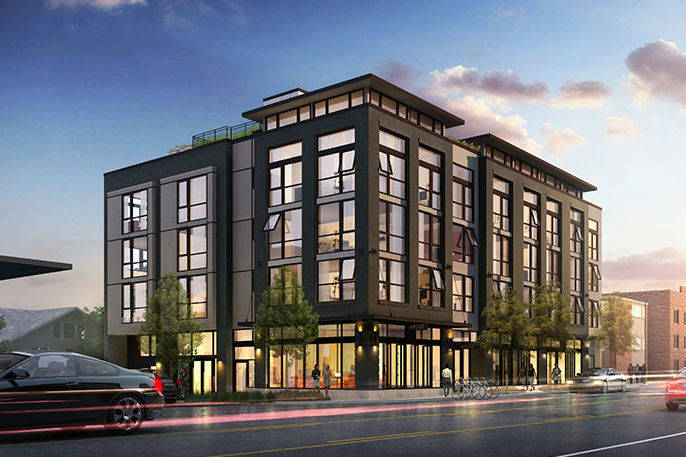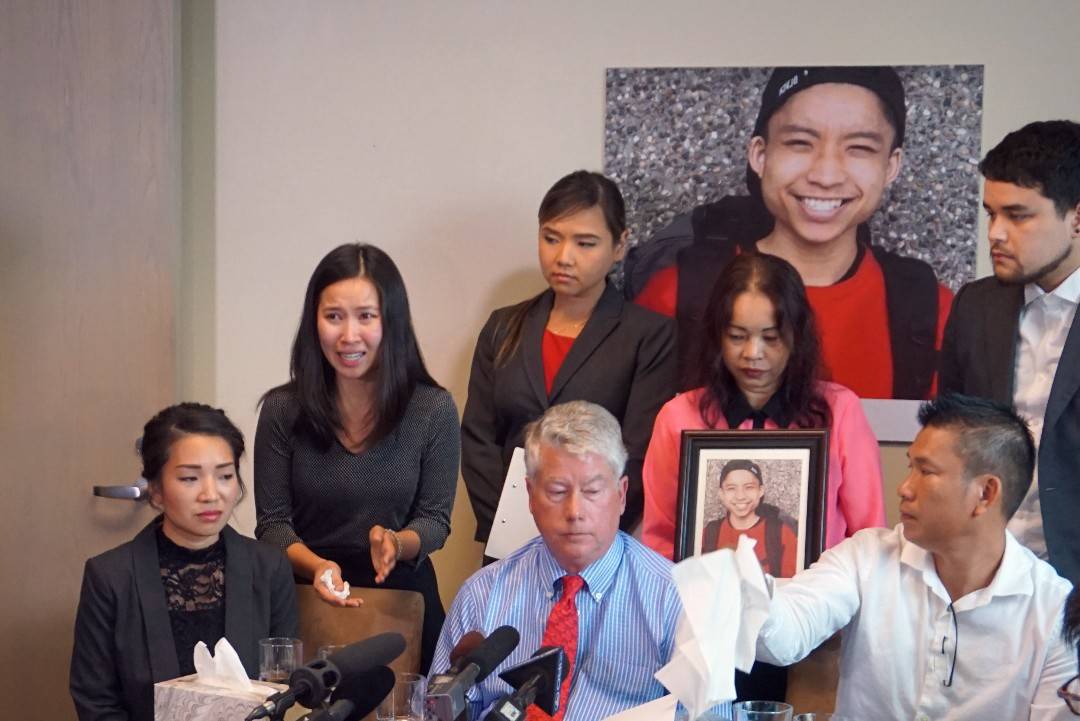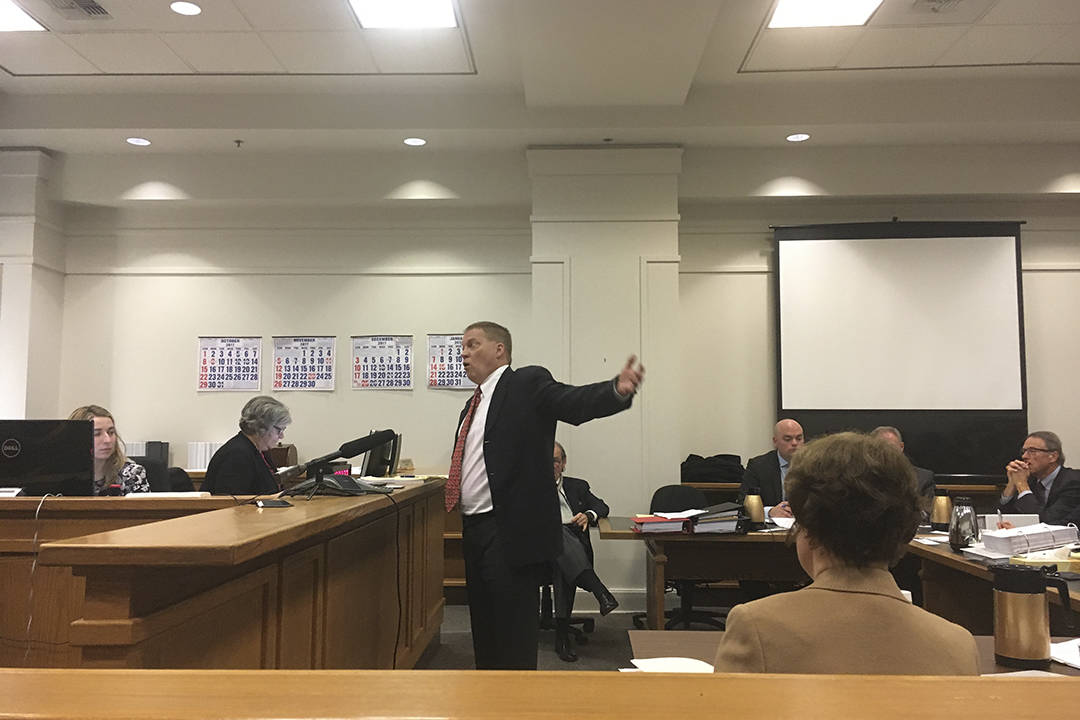Late buses are annoying. But do they also threaten Seattle’s goals for denser development?
That’s the question being raised by a recent ruling that put a Phinney Ridge microunit development on hold, in part because the No. 5 bus that runs by it was shown to not reliably arrive at the nearby bus stop every 15 minutes during the day.
The 15-minute figure is important because it’s the metric the Seattle City Council set back in 2010 as one of the requirements for allowing developers to build apartment complexes in urban villages without providing parking. The idea is that, as long as there is reliable bus service and nearby amenities, many renters will forgo car ownership, and thus will not seriously impact street parking. Conversely, if developers provide parking to tenants, the argument goes, it will result in more expensive housing that encourages car ownership in the city, exacerbating traffic and pollution issues.
Some neighbors of the proposed 55-unit apartment complex in Phinney, called Phinney Flats, are deeply skeptical of that logic. The neighborhood coalition Livable Phinney argues that renters may well take the bus to work every day, but will still own cars to get out on the weekend; even if they use services like Car2Go, they argue, those cars will get parked along streets already crammed with vehicles.
“There is no real established relationship between transit ridership and car ownership,” says Irene Wall, part of the group of neighbors who appealed the city’s permit to the development. “Relating the use of the bus to car ownership is specious.”
The neighbors couldn’t challenge that tenet of urbanism in an appeal hearing. But there was another issue that they could challenge: The reliability of the No. 5 bus. The city approved Phinney Flats based on King County Metro timetables showing that buses were scheduled to arrive at least every 15 minutes during the day. Earlier this year, a PhD statistician analyzed bus data over the course of several months and determined that more than 15 minutes passed between buses about 38 percent of the time; 10 percent of the time there was a 20 minute gap, and 2 percent of the time a 25 minute gap.
Anyone who rides city buses wouldn’t be surprised by that. Buses get delayed, and the 1- to 10-minute delays reflected in the data may seem mild. It’s why transit-tracking apps like OneBusAway are considered mandatory by many.
But Livable Phinney pressed the letter of the law to its advantage. In front of a hearing examiner in May, the neighbors argued that 15 minutes means 15 minutes, and the city can’t rely on bus time tables as evidence that the requirement is being met. In his July 24 ruling, hearing examiner Ryan Vancil agreed the city “cannot simply ignore” data that shows buses are not coming every 15 minutes.
“The analogy I use is Christopher Columbus setting sail and someone saying, ‘Hey Chris! The world is round! And Columbus saying, ‘No, our maps show it’s flat. We’re going with our maps,’” says Jeff Eustis, the lawyer who represented Livable Phinney in the case.
At the same time, requiring buses to be on time all the time would seem to be a near impossible bar to set for dense development. City officials maintain that bus schedules are the more reasonable way to measure transit frequency.
In a statement, Wendy Shark with the Seattle Department of Construction and Inspections (SDIC) says they’re still looking at what the ruling means for other construction. She says that printed timetables have long been accepted as the measure for how frequent bus service comes to an area, given the vagaries of transit.
“Daily service can fluctuate slightly based on all sorts of traffic variables, but the service schedule has been the measuring stick,” she says.
Eustis says the City Council could have written the law differently, but they didn’t.
“If that’s what the City Council wanted when they eliminated the parking requirement, they could have said an average of 15 minutes headway over the day,” he says (“headway” is the technical term for the length of time between buses).
Urban villages—concentrations of homes, businesses, and transit—are the epicenter of new development in Seattle. According to a press release Thursday from the Office of Planning and Community Development, Seattle has added 10,000 homes in the last 18 months; 85 percent of them have been in urban centers or urban villages.
The ruling does not kill the project. Rather, it sends the permit back to SDIC for further review. Transit was not the only issue the hearing examiner found fault with, though it did have the farthest reaching implications. Kelten Johnson, one of the developers behind Phinney Flats and an outspoken supporter of denser development in Seattle, insists the project meets requirements.
“We are almost finished permitting our project, which reflects the city’s affordability and livability goals,” he states in an email. “The project is within the Phinney Ridge Urban Village, an area that has been designated for urban density with little to no parking since the early 2000’s. Our project site meets the city’s definition of a frequent transit area and we look forward to moving forward with the project very soon.”
Eustis and Wall pushed back at the suggestion that they exploited a technicality to block a project neighbors would have opposed even if bus services ran perfectly on time.
“You characterized the 15-minute headway requirement as a ‘technicality’ but, all land-use code can be viewed in those terms,” says Wall in an email. “That does not mean we should permit development that does not comply with the law even if we wish it would satisfy a policy du jour like getting rid of cars or producing more affordable housing.”
dperson@seattleweekly.com








